Filter by
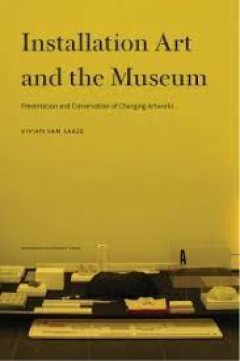
Installation Art and the Museum Presentation and Conservation of Changing Ar…
Installation art has become mainstream in artistic practices. However, acquiring and displaying such artworks implies that curators and conservators are challenged to deal with obsolete technologies, ephemeral materials and other issues concerning care and management of these artworks. By analysing three in-depth case studies, the author sheds new light on the key concepts of traditional conser…
- Edition
- -
- ISBN/ISSN
- -
- Collation
- -
- Series Title
- -
- Call Number
- -

Inside Installations
In installatiekunst is alles mogelijk. De korte levensduur van de gebruikte materialen, technieken en media kunnen de beheerder van het werk echter tot wanhoop drijven. Wat bedoelde de kunstenaar? Hoe zijn de installaties ontstaan? Hoe kunnen deze geconserveerd en gedocumenteerd worden? Dit boek beschrijft de resultaten van een grondig onderzoeksproject, uitgevoerd door een internationale groep…
- Edition
- -
- ISBN/ISSN
- 9789048513659
- Collation
- -
- Series Title
- -
- Call Number
- -
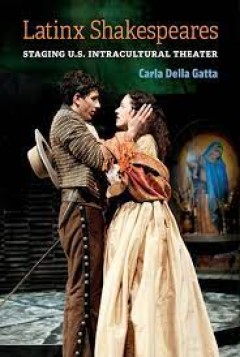
Latinx Shakespeares Staging U.S. Intracultural Theater
Latinx peoples and culture have permeated Shakespearean performance in the United States for over 75 years—a phenomenon that, until now, has been largely overlooked as Shakespeare studies has taken a global turn in recent years. Author Carla Della Gatta argues that theater-makers and historians must acknowledge this presence and influence in order to truly engage the complexity of American Sh…
- Edition
- -
- ISBN/ISSN
- 9780472903740
- Collation
- -
- Series Title
- -
- Call Number
- -

Thank you M. Monnet' : Essays on the History of European Integration
This book collects contributions by Richard T. Griffiths on the history of European integration, some published for the first time in English. The essays range in chronology from the early experiences with the Marshall Plan to the difficulties and opportunities for the EFTA countries afforded by association with the EEC in the 1970s and 80s. The book interprets European integration far wider th…
- Edition
- -
- ISBN/ISSN
- 9789400601079
- Collation
- -
- Series Title
- -
- Call Number
- -
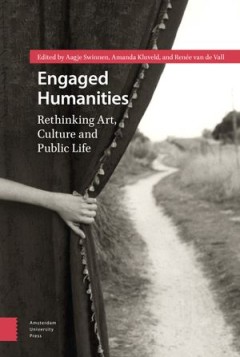
Engaged Humanities Rethinking Art, Culture, and Public Life
What is the role of the humanities at the start of 21st century? In the last few decades, the various disciplines of the humanities (history, linguistics, literary studies, art history, media studies) have encountered a broad range of challenges, related to the future of print culture, to shifts in funding strategies, and to the changing contours of culture and society. Several publications hav…
- Edition
- -
- ISBN/ISSN
- 9789048550401
- Collation
- -
- Series Title
- -
- Call Number
- -

Media Primitivism Technological Art in Africa
In Media Primitivism Delinda Collier provides a sweeping new understanding of technological media in African art, rethinking the assumptions that have conceptualized African art as unmediated, primary, and natural. Collier responds to these preoccupations by exploring African artworks that challenge these narratives. From one of the first works of electronic music, Halim El-Dabh’s Ta’abir A…
- Edition
- -
- ISBN/ISSN
- 9781478090434
- Collation
- -
- Series Title
- -
- Call Number
- -

Media Primitivism Technological Art in Africa
In Media Primitivism Delinda Collier provides a sweeping new understanding of technological media in African art, rethinking the assumptions that have conceptualized African art as unmediated, primary, and natural. Collier responds to these preoccupations by exploring African artworks that challenge these narratives. From one of the first works of electronic music, Halim El-Dabh’s Ta’abir A…
- Edition
- -
- ISBN/ISSN
- 9781478090434
- Collation
- -
- Series Title
- -
- Call Number
- -

Contemporary Art in Heritage Spaces
Contemporary Art in Heritage Spaces considers the challenges that accompany an assessment of the role of contemporary art in heritage contexts, whilst also examining ways to measure and articulate the impact and value of these intersections in the future. Presenting a variety of perspectives from a broad range of creative and cultural industries, this book examines case studies from the past de…
- Edition
- -
- ISBN/ISSN
- 9780429624827
- Collation
- -
- Series Title
- -
- Call Number
- 701 CON c
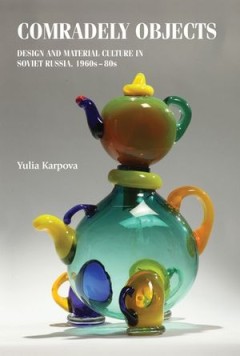
Comradely objects: Design and material culture in Soviet Russia, 1960s–80s
The Russian avant-garde of the 1920s is broadly recognised to have been Russia's first truly original contribution to world culture. In contrast, Soviet design of the post-war period is often dismissed as hack-work and plagiarism that resulted in a shabby world of commodities. This book offers a new perspective on the history of Soviet design by focusing on the notion of the comradely object as…
- Edition
- -
- ISBN/ISSN
- 9781526139863
- Collation
- -
- Series Title
- -
- Call Number
- 904 KAR c
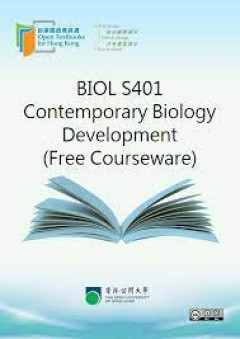
Contemporary Biology Development
We’ll begin with a brief introduction to the two main types of stem cells, embryonic and adult stem cells. We’ll then discuss stem cell potency. The second section “Stem cells in research and diseases management” will focus on the opportunities and roles of stem cells in diseases and medical research. Stem cells have a special position in contemporary biological sciences due to their…
- Edition
- -
- ISBN/ISSN
- -
- Collation
- -
- Series Title
- -
- Call Number
- 570 OPE o
 Computer Science, Information & General Works
Computer Science, Information & General Works  Philosophy & Psychology
Philosophy & Psychology  Religion
Religion  Social Sciences
Social Sciences  Language
Language  Pure Science
Pure Science  Applied Sciences
Applied Sciences  Art & Recreation
Art & Recreation  Literature
Literature  History & Geography
History & Geography